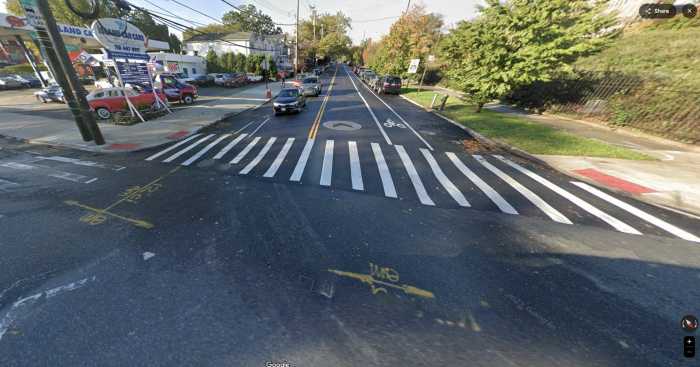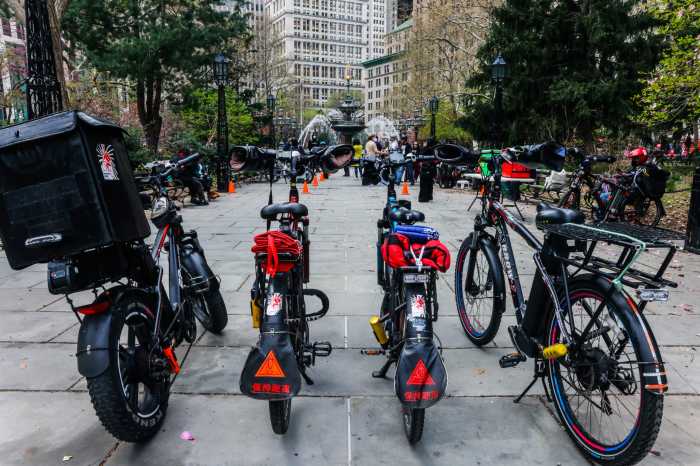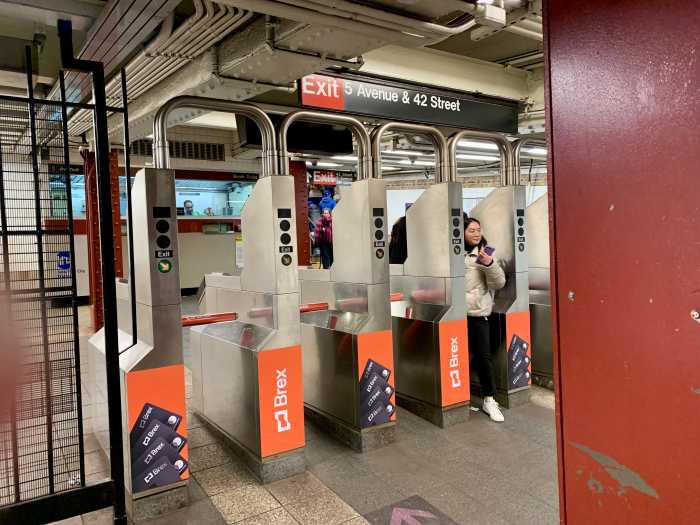Tens of thousands of drivers with Uber, Lyft and other ride-hailing services in the city are set to receive a hefty pay raise.
The Taxi and Limousine Commission’s Board of Commissioners on Tuesday voted to approve the Driver Income and Transparency Rules, which guarantee a minimum hourly wage of $17.22 (after expenses) to more than 80,000 drivers who work for larger app-based companies such as Uber, Lyft, Via and Juno. A higher minimum wage also was set for drivers with wheelchair-accessible vehicles.
The new rules mean 96 percent of ride-hail drivers in the city will get an additional $10,000 in income per year, according to the TLC.
“New York City is the first city globally to recognize that the tens of thousands of men and women who are responsible for providing increasingly popular rides that begin with the touch of a screen deserve to make a livable wage and protection against companies from unilaterally reducing it,” TLC chair Meera Joshi said following the vote. “Convenience costs, and going forward, that cost will no longer be borne by the driver.”
Drivers will be paid based on a per-minute, per-mile minimum trip formula once the rules go into effect, which is expected to happen by mid-January 2019.
Ride-hail companies will be responsible for ensuring drivers are paid appropriately based on the new rules. The TLC also will be making a wage calculator available on its website so that drivers can determine how much their employer should be paying them.
Uber and Lyft on Tuesday warned that the new rules stifle competition in the industry and would result in higher fares for customers while decreasing availability.
“Uber supports efforts to ensure that full-time drivers in NYC — whether driving with taxi, limo or Uber — are able to make a living wage, without harming outer borough riders who have been ignored by yellow taxis and underserved by mass transit,” Uber’s director of public affairs Jason Post said. “The TLC’s implementation of the City Council’s legislation to increase driver earnings will lead to higher than necessary fare increases for riders while missing an opportunity to deal with congestion in Manhattan’s central business district.”
The TLC also did not consider that some companies issue driver incentives and bonuses to ensure reliability and accessibility in areas outside of Manhattan when it came up with the new wage formula, according to Post.
Describing the rules as a “step backward for New Yorkers,” Lyft took issue with a loophole in the wage calculator that it said allows companies to petition for their own, lower utilization rate within the formula. The company also argued against an “eleventh-hour” rule addition that sets a different minimum pay rate for trips that take drivers outside of the five boroughs.
"Lyft believes all drivers should earn a livable wage and we are committed to helping drivers reach their goals,” a spokesman for Lyft said Tuesday. “Unfortunately, the TLC’s proposed pay rules will undermine competition by allowing certain companies to pay drivers lower wages, and disincentive drivers from giving rides to and from areas outside Manhattan.”
While ride-hail companies oppose the regulations, the Independent Drivers Guild, representing over 70,000 for-hire vehicle drivers in the city, lauded the decision.
“All workers deserve the protection of a fair, livable wage and we are proud to be setting the new bar for contractor workers’ rights in America,” said Jim Conigliaro Jr., founder of the Independent Drivers Guild.
Via also welcomed the new wage rules on Tuesday.
"As the industry leader in driver earnings in New York City, we are looking forward to working with the TLC on implementing this rule," the company said in an emailed statement.
Joshi, meanwhile, said that she believes New Yorkers would be willing to pay more and wait a little longer if it meant their drivers are being paid a fair wage.





































